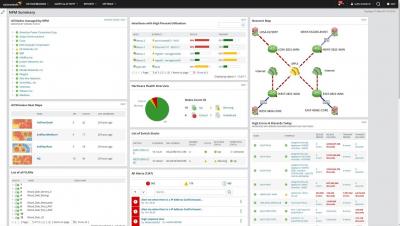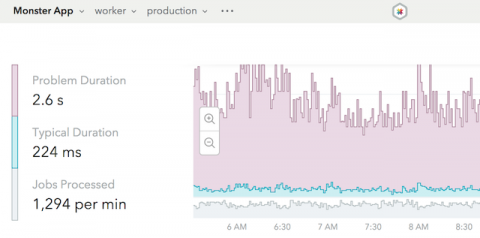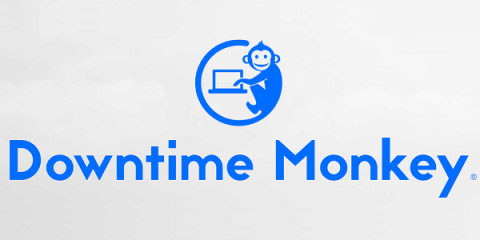Operations | Monitoring | ITSM | DevOps | Cloud
Monitoring
The latest News and Information on Monitoring for Websites, Applications, APIs, Infrastructure, and other technologies.
Network Performance Monitor (NPM) Licensing
Announcing Skylight 4.0: Now with Background Jobs!
While Skylight was originally developed to instrument web requests, we understand the web interface is only one part of your server-side application. For this reason, we've been hard at work preparing Skylight for Background Jobs!
How Correlating User and Full-Stack Monitoring Improves Digital CX
Easy A/B Testing with PlanOut
So you want to A/B test your web app. The idea is simple, but the details can get messy, and you don’t want to re-invent the wheel. Services like Optimizely are pretty good, but they can be expensive and full of features you don’t need immediately. In this post, we’ll share how Sentry wrote an experimentation system with minimal work.
The New Rules of Sampling
One of the most common questions we get at Honeycomb is about how to control costs while still achieving the level of observability needed to debug, troubleshoot, and understand what is happening in production. Historically, the answer from most vendors has been to aggregate your data–to offer you calculated medians, means, and averages rather than the deep context you gain from having access to the actual events coming from your production environment.
Things you might have missed when using Dashbird
Just starting out with Dashbird? Great, you are in the right place. I’ve been speaking with hundreds of our new users in the past couple for months about their experience with Dashbird. I must say the feedback has been incredible so far. However, there are a few things I’ve noticed that our users haven’t yet taken advantage of within the platform. For a better success, let me point them out to you.
How to Secure Your WordPress Website in 2019
WordPress is the most popular CMS in the world, accounting for more than 60% of the market. The reasons for such popularity are obvious: it’s a convenient and powerful system with dozens of built-in tools and thousands of themes and plugins. WordPress offers numerous benefits and allows you to quickly create a customized website, no matter whether you have a news blog or an e-commerce business.
Improvements & Bugfixes
Since the new year we've released a bunch of new features and plans. The total number of Downtime Monkey users has increased by over 50% and the number of websites being monitored has more than doubled. So we've taken the last few weeks to relax, kick-back and take it easy catch up with some maintenance. We've reduced memory use of clean-up scripts, automated the addition of free SMS credits upon sign-up and applied a bugfix to our Slack App.
How to Optimize On-Page Website Speed
Your customers aren’t shy about what they want. They want a website that loads quickly and efficiently on any device. More people than ever are surfing the internet on their phones. Having a fast website is important for improving search engine rankings and keeping your profits up. The first thing you can do is determine your website’s speed with a free website speed test. Here are six ways to optimize on-page website speed.











